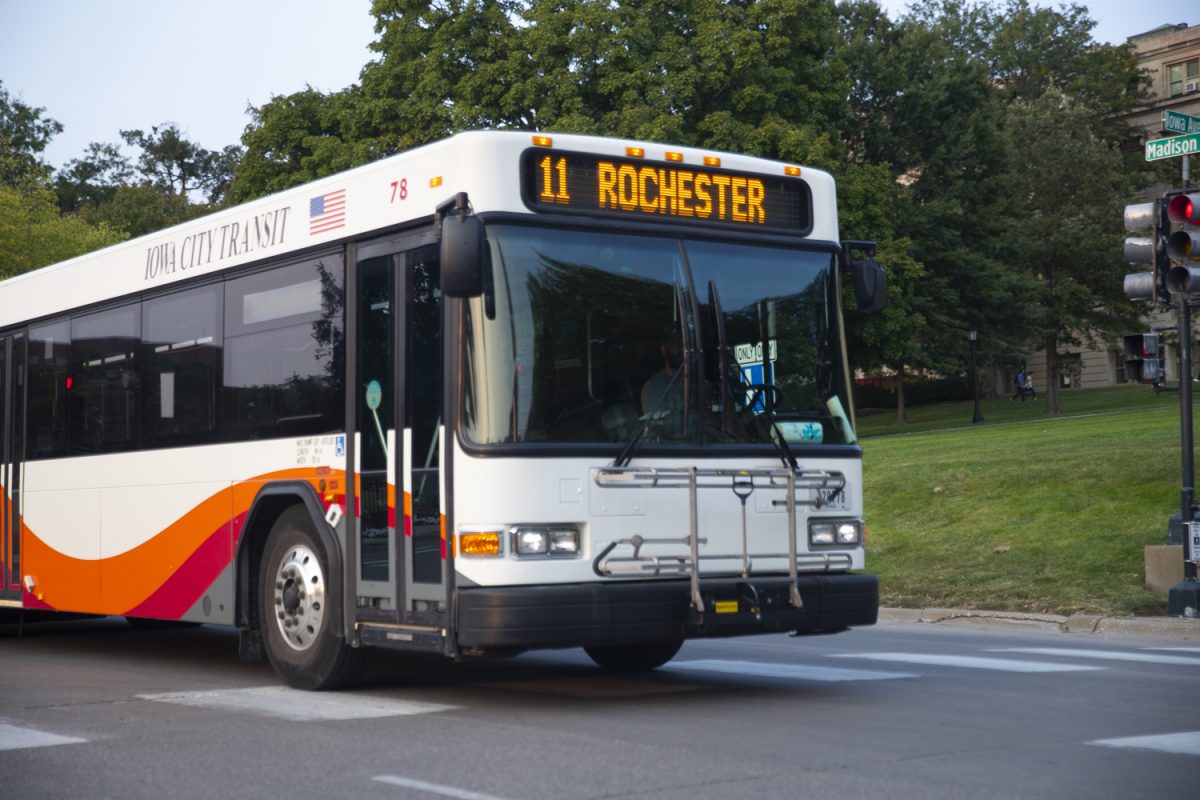The Fare Free Iowa City Pilot Program, offering free bus rides to residents across the city since Aug. 1, 2023, is set to conclude on July 31, but the program’s record-breaking ridership numbers have transportation coordinators and elected officials working to extend the pilot.
According to Iowa City’s Transportation Division, the transit system drove 30.7 percent more residents around the city in 2024 compared to 2023. The program cost the city about $1 million per year.
The most enormous percentile surge in riders was on the 13-South Gilbert route, which saw 53.6 percent more riders in 2024. The 8-Oakcrest route saw the most significant passenger increase, giving 68,211 more rides in 2024.
Johnson County Mobility Coordinator Kelly Schneider said the fare-free service has made rides run faster and more efficiently without the added time of passengers paying the service fee.
“The Iowa City Transit Fare Free Pilot has made a tremendous impact by ensuring a person’s mobility isn’t dependent on income,” Schneider wrote in an email to The Daily Iowan. “I am pleased to see the program’s success and hope to see it stay for the years to come.”
Iowa City City Council member Shawn Harmsen was in office when the city council passed the pilot unanimously on June 6, 2023.
RELATED: Iowa City begins $30 million transit and equipment facility project
After the COVID-19 pandemic social distancing requirements became more relaxed, there was a heightened need for a revamped transit system. That’s when city staff came to the councilors with the two-year proposal, relying on American Rescue Plan Act, or ARPA, funds where the fare funds were dropped.
An Iowa City Press-Citizen report made that decision easier, which found that fare revenue made up only 8 percent of Iowa City Transit’s funding in fiscal 2022.
Harmsen said the service has proven to greatly help workers and businesses in the city while also simplifying the process by eliminating the need for residents to always carry a dollar.
“The increase is really showing the need in this community for that kind of free service, as well as just sort of the viability of public transit in general,” Harmsen said. “A good system is used by a lot of people, and it benefits a lot of people, and that has such a wonderful ripple effect in the community.”
Iowa City’s Director of Transportation Services Darian Nagle-Gamm highlighted how the free fare service can help the city reach its environmental goals.
In 2019, Iowa City established an emission reduction goal of 45 percent with a vision to reach net zero by 2045. One method to reach these goals is to incentivize public transit.
“We’ve calculated that out from a transit perspective, too, and actually, we’ve used that to set a goal of 1.91 million annual riders on transit,” she said. “Everything that we’re doing to help encourage the community to take transit is really all directed towards reaching that goal.”
Harmsen expects the city council will have a longer discussion about the future of the program over the summer. While all are in favor of extending it, the question of how to do so is still being decided. The council is discussing whether to increase the local option sales tax or use other methods they’ve recently used, such as increasing parking fees.



